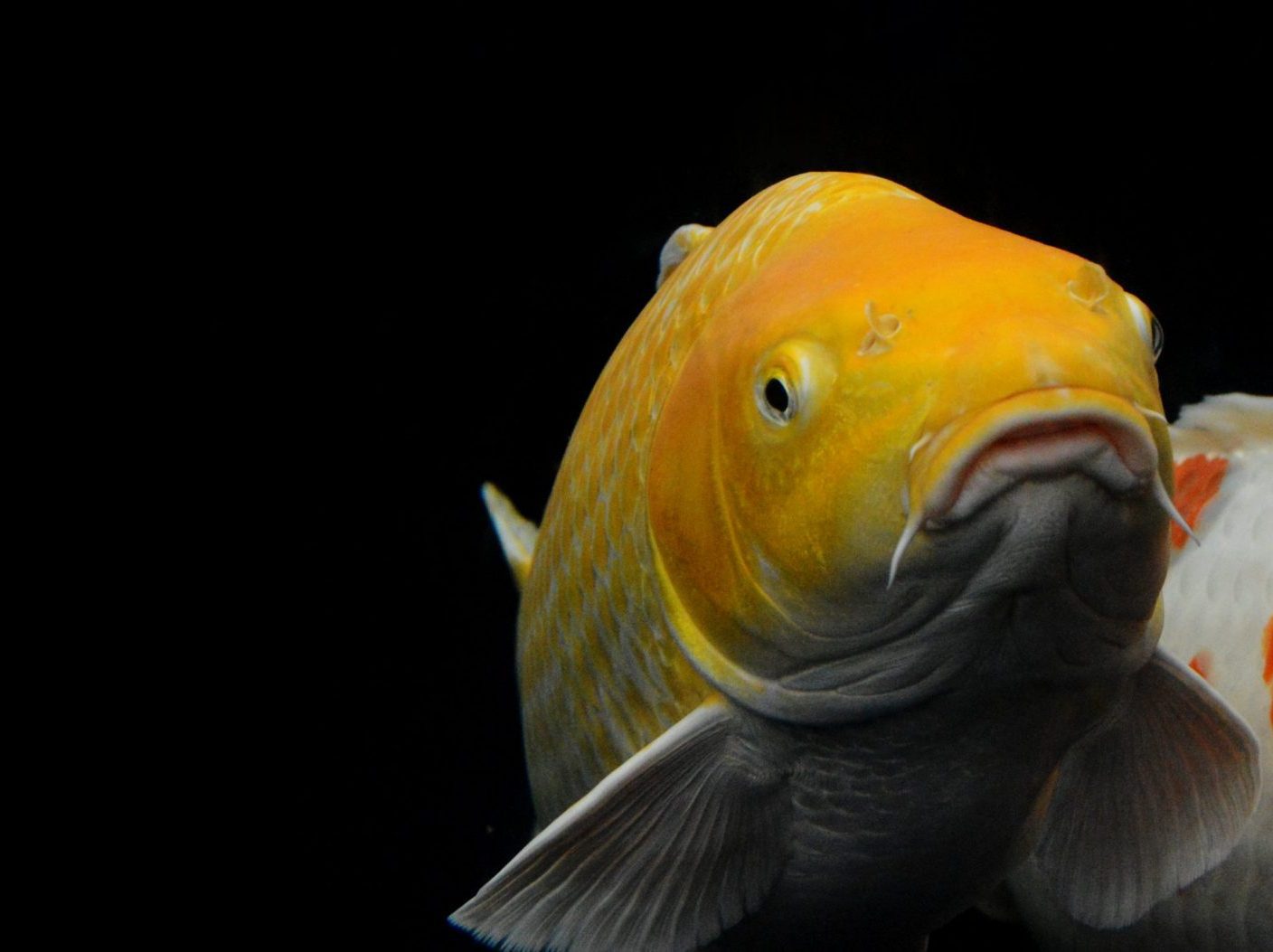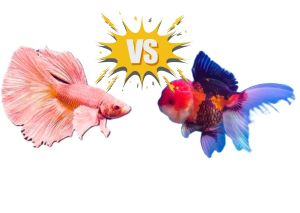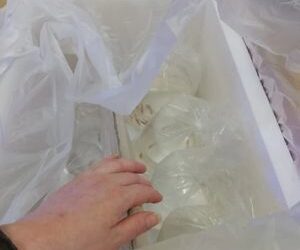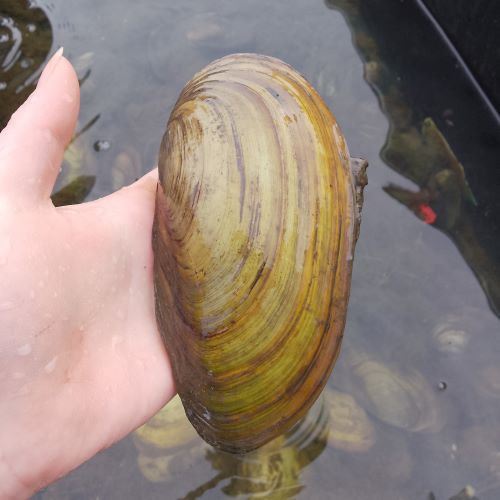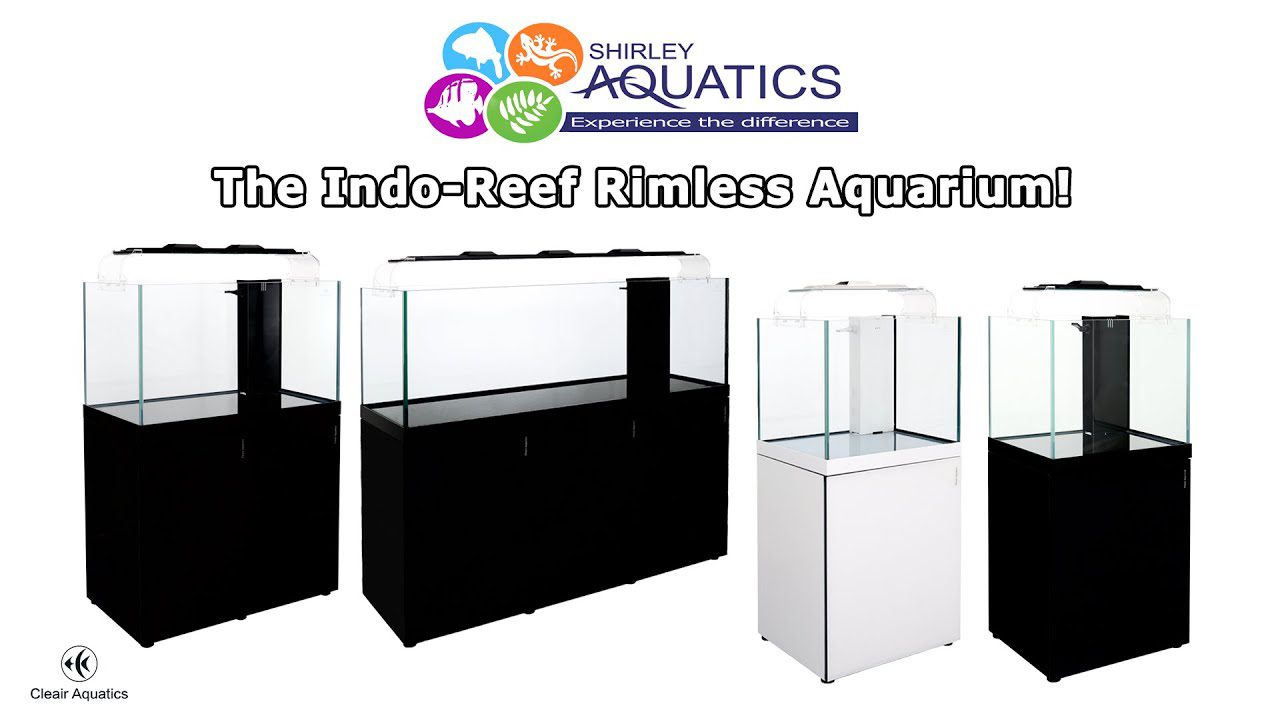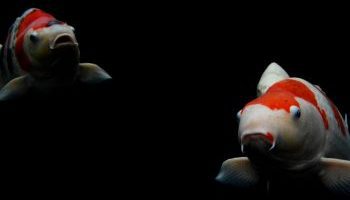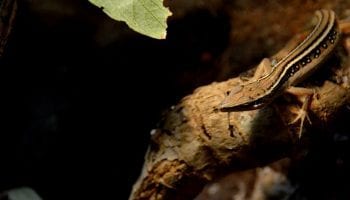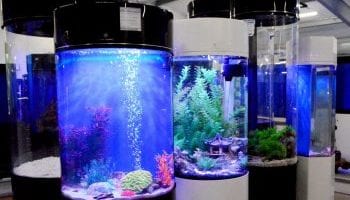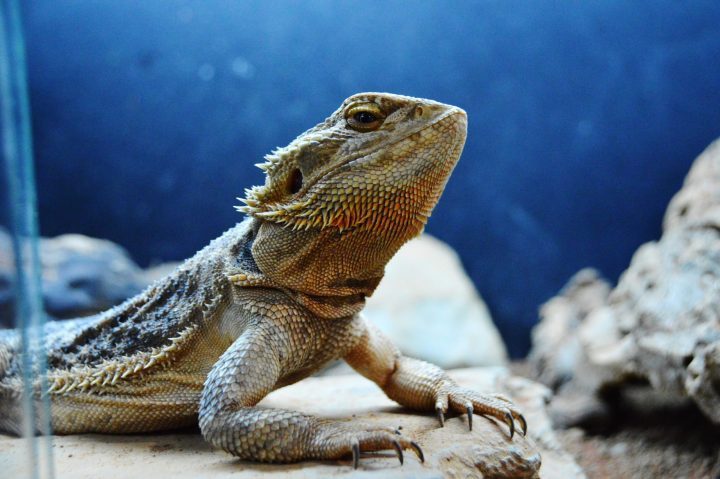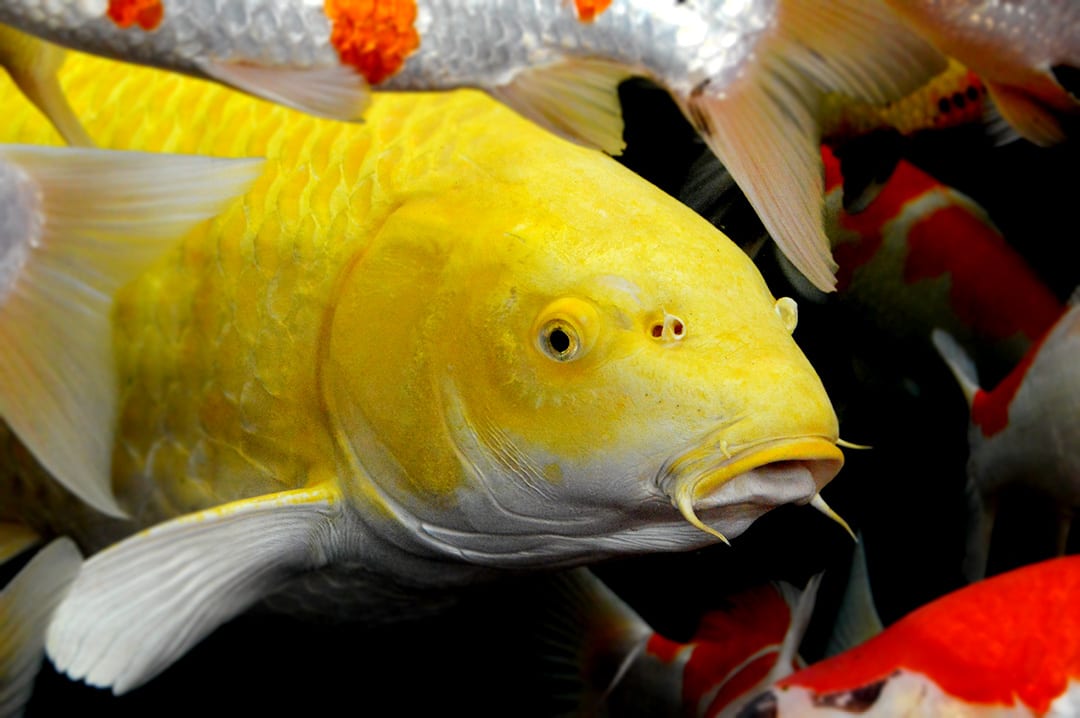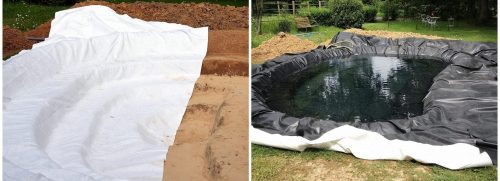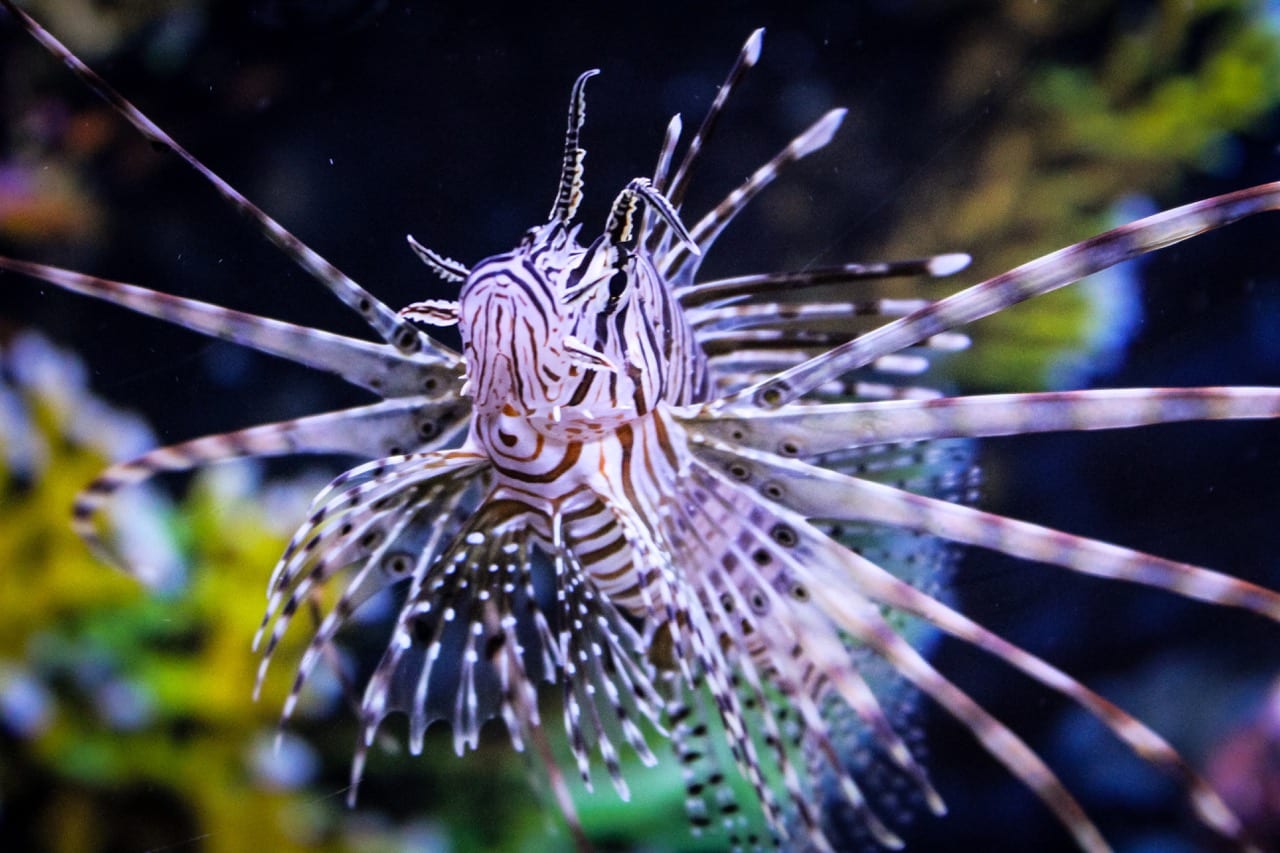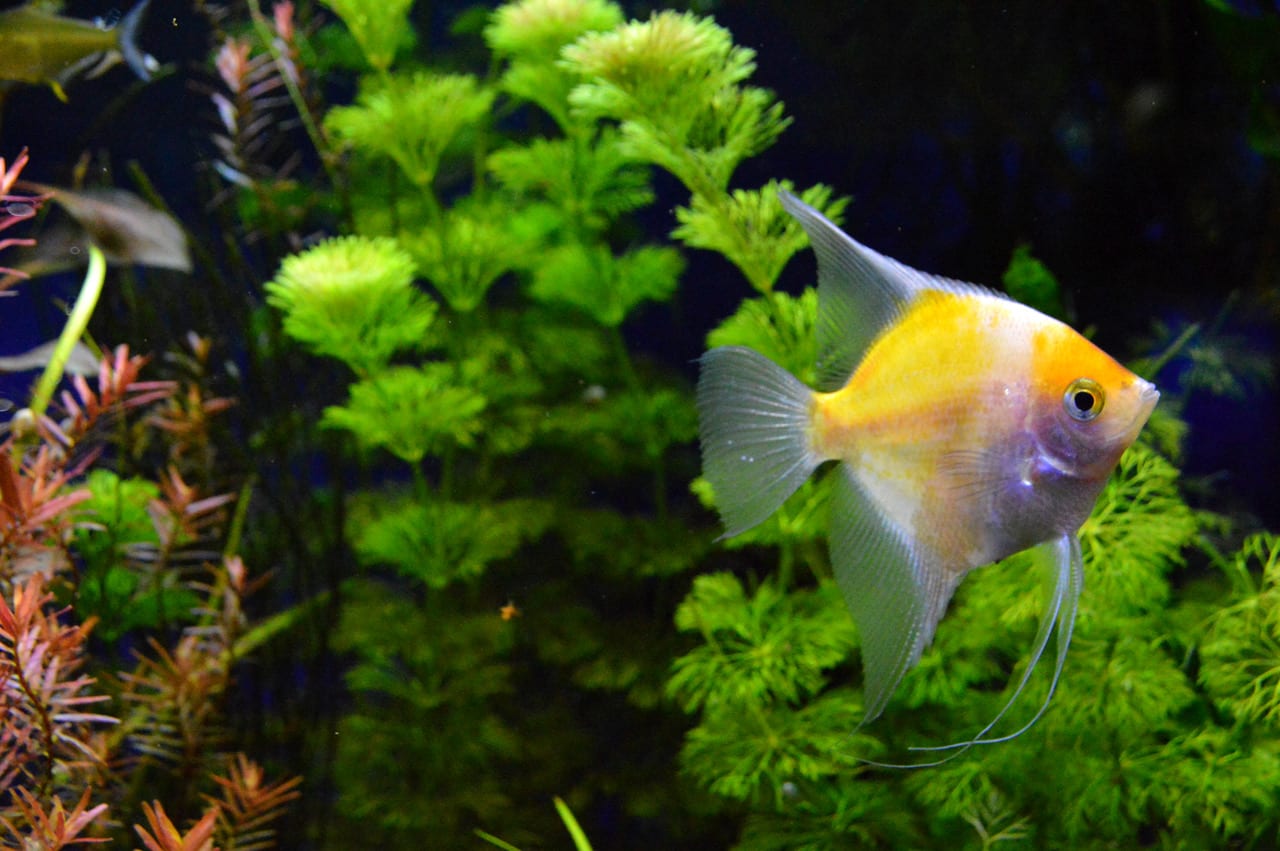There are lots of koi breeds out there but spotting the differences can be tricky. Here are 5 basic breeds you’ll be able to spot in our own koi ponds to buy yourself, or just to practise your eye!
Koi colours
Before going onto the 5 basic breeds of koi it’s important to get a handle on the names of the colours. As you may be aware, koi originated in Japan so there are a few Japanese words to learn if you want to know exactly what you’re looking at or buying.

These colour names are used less frequently as many of the names of koi breeds will account for the colour of the fish, like Chagoi. Even so, it can be useful to be aware of these words and their meanings when talking about or researching koi.
Koi features
There are plenty of koi features to learn. For the basics we’ll look at four; Doitsu, Gin Rin, Tancho, and Maruten. Currently our most expensive koi for sale is a Gin Rin Showa – see if you can spot her next time you’re in the shop after reading these!




Basic breeds of koi
The five basic breeds of koi we’ll look at here are Sanke, Showa, Ogon, Chagoi, and Kohaku. These tend to cover most of the bases of the koi you’ll see available to buy here at Shirley Aquatics. For a quick intro to the fish we currently have in stock check our YouTube channel here.
Sanke koi
These Sanke koi and Showa koi are easily confused. Sanke have a white ‘base colour’ running from the tip of the nose all the way back to the end of the tail with large red patches and smaller patches of black. These black (or Sumi) patches are often much smaller than the red patches and are often more like a ‘pebbledash’ or ‘spotting’ pattern. Typically Sanke do not have reflective scales but you can get Gin Rin and Doitsu varieties.
Another clue when it comes to Sanke is the placement of the pattern. If the pattern is on the ‘top’ or back of the fish, and doesn’t wrap around the body, it’s a Sanke. One of the reasons Showa and Sanke are often mistaken is this ‘wrapping’. If it’s just up top it’s a Sanke, if it’s all over and below the ‘lateral line’ (halfway down the side of the fish) it’s a Showa.
The koi below is a 2 year old male Sanke koi. It measures 52cm and was bred at the Sakuma koi farm in Isawa – around a 2 hour train ride from Tokyo. You can see how the majority of the patterns stay above the lateral line, the fish is has a white (shiro) base colour, large red (aka) patches and some black (sumi) accents. Usually there is no black markings visible on the head.
Sanke can also have small black stripes on the pectoral fins (the ones on the side). This is called Tejima (said ‘Teh-Ji-mah). However, it’s common for Sanke not to have any black in the fins, too.
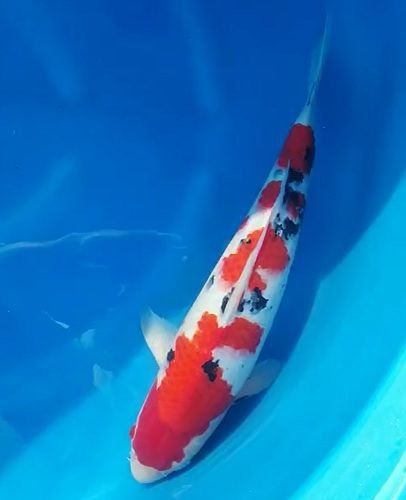
Showa koi
Showa have a black (sumi) base colour. The white and red patches are then ‘on top’ of that. This means that the sumi patches are usually much larger than on Sanke. Showa also have Motoguru which is black patches on the pectoral fins. This will extend as the koi ages to cover about half of the pectoral fin.
Showa tend to be a bit chunkier than Sanke. Sanke tend to be a slimmer, longer fish. It is very difficult to use body shape as a good indicator for young koi. It’s also not always correct. The head on Showa will also usually have a shorter head. They tend to be more ‘stocky’ all round than Sanke.
Finally, Showa will often have deeper, more pronounced reds than Sanke. Sanke tend more towards the orange end of the red spectrum like Kohaku.
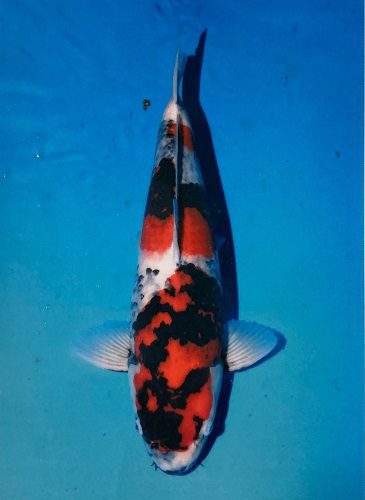
Ogon koi
Ogon koi are technically one solid colour and can be regular or metallic. ‘Ogon’ translates literally to ‘Gold’ but Ogon koi can be lots of colours. In common parlance amongst koi keepers it has come to mean ‘metallic, solid-coloured koi’ – which isn’t strictly correct.
The most popular types of Ogon in the UK are platinum, which is actually pure white, and Yamabuki, bright yellow. Can you think of any solid-coloured bright yellow koi you might know? That’s right! Our beloved Buttercup is a gorgeous example of a Yamabuki Ogon koi.
Ogon koi are typically good growers and are friendly so hand feeding is absolutely an option with these koi.
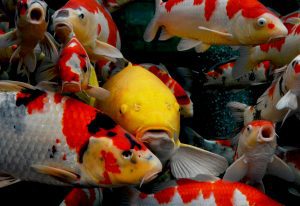
Chagoi koi
Arguably the friendliest koi breed you can keep. They can drastically calm down an excitable group of fish and will often come to greet owners when you approach the pond. When we clean the acrylic on our main koi pond our Chagoi, Porky, will always come and say hello – often nudging our hands until we give them some fuss. They’re another breed that grows quickly and can become quite large. Porky is now pushing 85cm!
Chagoi koi can range from solid dark brown (almost black) all the way through to a saffron colour or an olive green. They’re often bought more for their personality and the effect they have on other fish rather than their colouration.
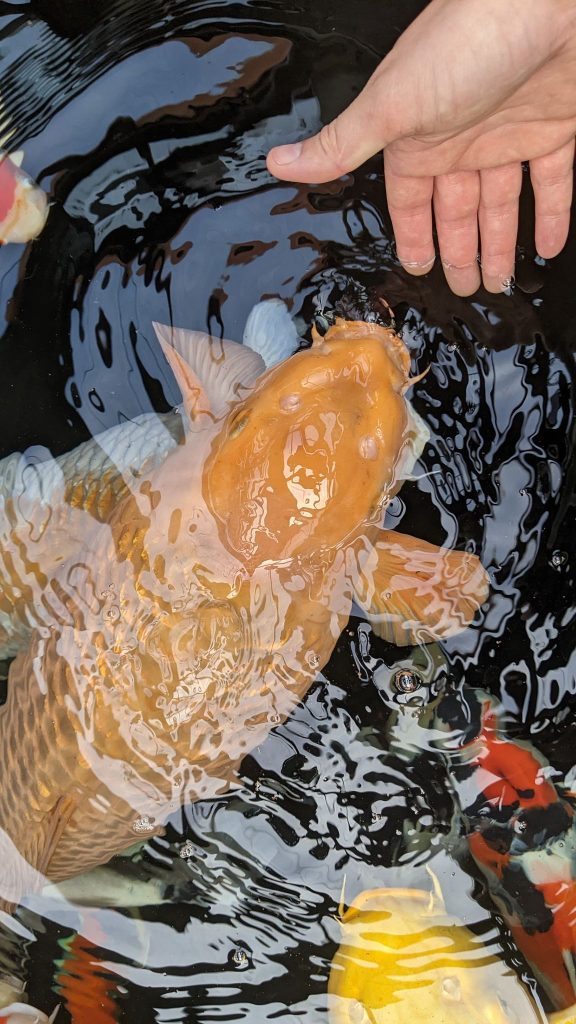
Kohaku koi
The archetypal koi. Kohaku have been bred since the 1880s and are considered the ‘classic’ koi by many. Kohaku are white koi with red markings and can be Doitsu, Gin Rin, or ‘standard’.
Kohaku are often broken down into categories depending on their patterns and marking. There will often be clear, differentiated areas of red or orange colour on a Kohaku. How many there are will determine the classification. For example, a Kohaku with two patches of red is known as a Nidan.
- Nidan – two patches of colour
- Sandan – three patches of colour
- Yondan – four patches of colour
- Godan – five patches of colour
- Inazuma – a zigzag pattern
- Ohmoyo – a single unbroken patch of colour along the body
- Kuchibeni – this refers to a patch of colour on the mouth that looks like lipstick.
Keen observers will also have concluded that a Tancho koi is a Kohaku with the circle of colour on the head.
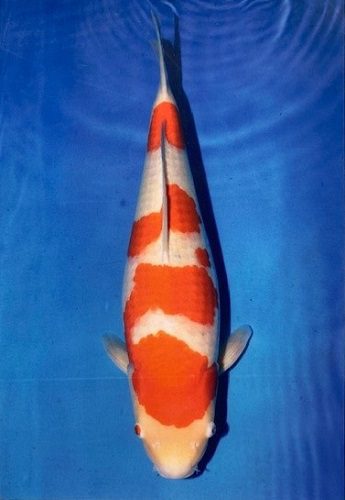
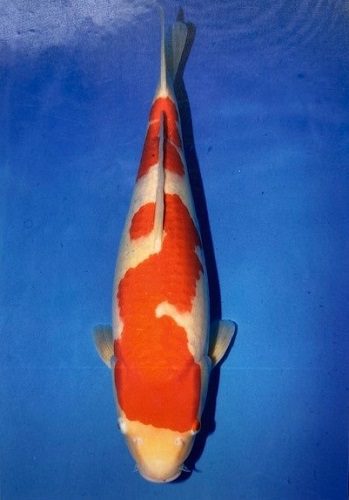
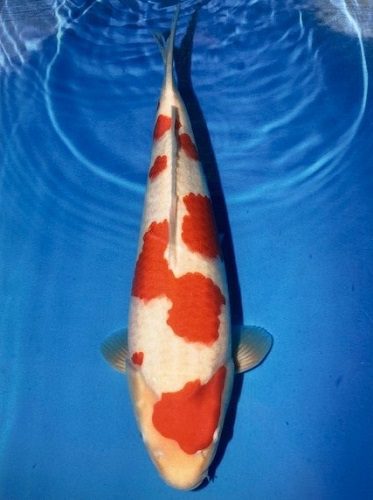
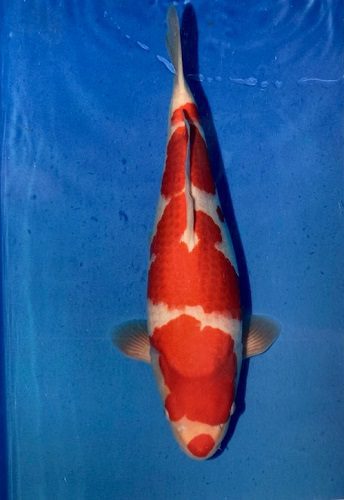
Identifying Kohaku by pattern alone is tricky but a very enjoyable passtime.
If there is anything else you’d like to know about koi then please do pop in store and ask one of our team!


